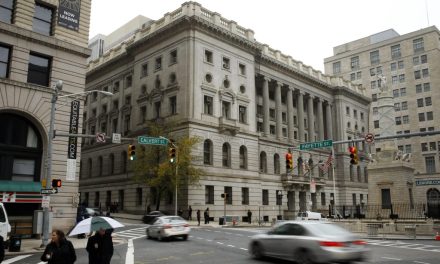By Megan Sayles,
AFRO Business Writer,
msayles@afro.com
A new report from the Annie E. Casey Foundation found that Washington D.C. is the most expensive place in the country for child care.
According to the 2023 Kids Count Data Book, the annual cost for center-based toddler daycare is $24,396, while home-based toddler daycare costs $19,291. Comparatively, Maryland and Virginia’s annual center-based child care amounts to $11,090 and $11,579 respectively.
Child care issues in the District have led to 14 percent of children living in families in which at least one person had to quit, change or turn down a job, according to the report.
“There’s a lot of gaps in child care in D.C. right now, and affordability is a really big one for many families. If you’re making around the state median income then you are probably paying close to a third of your income on child care,” said Ruqiyyah Anbar-Shaheen, director of early childhood systems at D.C. Action.
“When talking about child care affordability, you also have to consider whether families with low income have access to fewer options than other families, which they do. Not only is child care unaffordable, but there’s just not enough of it, and for families with low-income, there’s even less.”
D.C. Action, a nonprofit and nonpartisan organization, exists to provide research and advocacy around improving the lives of children, from birth to age 24, in the city. Its top priorities include racial equity, economic justice, education and health and safety.
Over the last year, D.C. Action has been instrumental in advocating for D.C. government to expand eligibility for early child care subsidies. In March, Mayor Muriel Bowser included this expansion in her Fiscal Year (FY) 2024 Fair Shot Budget.
The D.C. Council approved the proposal in May, which raised the income cap for the Child Care Subsidy Program from $75,000 to $90,000 for a family of four, or 300 percent of the federal poverty line. Now, nearly 2,200 new children are eligible for subsidized child care.
However, subsidies cannot resolve the shortage of child care slots in the District.
According to Anbar-Shaheen, the lack of affordable child care in D.C. disproportionately impacts Black and Brown communities.
“In the District, wealth is concentrated in White households. If you are a family that needs child care assistance and is eligible for it, not all [daycare] programs participate in the child care subsidy program. Not all of them except a voucher,” said Anbar-Shaheen. “That means you have a much smaller pool of programs to choose from when you’re looking for child care.”
Martha Assefa has lived in D.C.’s Ward 7 since 2020. She has a 16-year-old stepdaughter and a 1-year-old daughter named Ida, who will turn two in the fall.
Because Assefa and her husband, Dante Comparetto, do not have family members located nearby, child care has been an important issue for the couple.
“My daughter was born during the pandemic, and my husband was in school at the time, luckily it was virtual. Until Ida was mobile, we could make it work between the both of us because she could stay in one spot,” said Assefa. “Then, it started getting really tricky to try and figure out what we were going to do for child care.”
Assefa started with in-home care, but it cost her $25 an hour. She also had to book a child care worker for a minimum of four hours. At times, her husband passed on temporary work as a substitute teacher because child care costs outweighed his wage.
When her husband was set to return to school in person, Assefa knew it was time to find center-based child care.
“We made just under $2,000 more than the maximum income in order to qualify for subsidy. If you don’t qualify for subsidy, many of the high-quality subsidized child care programs only take subsidies, and there’s a very small percentage of private-pay centers, and those spots were already full,” said Assefa.
“The places that had strong curriculum, experienced educators and high standards were either already full or we were not eligible for them.”
Assefa eventually located a center in her neighborhood, but it wasn’t a good fit for Ida. She cried every day and wouldn’t stop. After six weeks, Assefa pulled her out of the center.
“All the data shows that access to quality care is what sets up children for a lifetime. I know the difference already from having Ida be at home with us too much [rather than] being with other children and having experienced educators teaching her,” said Assefa. “She’s already behind.”
Both Assefa and Anbar-Shaheen said an important piece of increasing access to affordable child care in the District is enhancing the Early Childhood Pay Equity Fund, which could help improve early childhood educator retention.
Currently, eligible educators can obtain a maximum of four payments of up to $3,500 through the fund. According to Anbar-Shaheen, their payment is based on their title and discounts their level of experience in child care.
“Our workforce is primarily Black and Brown women, and they’ve been subject to some of the worst pay of any jobs as a result of just plain racism and sexism. Getting that situation resolved by publicly funding [early childhood] educators is an important step,” said Anbar-Shaheen.
“Once we’ve done that, I think the next big step is making sure that when we’re paying educators, we’re not only paying them for what role they’re in and what their degree is in. We also have to take into account and value the amount of experience they have.”
Megan Sayles is a Report for America Corps member.
The post D.C. ranks as most expensive place for early childcare in the U.S. appeared first on AFRO American Newspapers .











